The Evolution of Energy: The Roasty, Toasty Tale of Progress


You know, life can be kind of crazy. Like, one moment, you're a caveman chilling in a cave, scratching some doodles on the walls with a sharp rock, thinking, "Man, a bit of heat and light wouldn't be half bad right now." The next moment, you've got this weird hot, bright stuff dancing around on a stick. Not only was it great for huddling around and perfecting the art of marshmallow toasting, it also happened to lay the groundwork for everything we know about harnessing energy today.
Let's think about this a bit deeper. Picture a group of chilly men and women in a cave (yeah, let's not be sexist here; cave ladies were equally important in the whole survival thing) huddled around in a dark, kinda creepy cave. Teeth chattering, skin all bumpy with goosebumps, stomachs grumbling for a delicious slice of mammoth steak. Their day gets a whole lot better when they discover fire. Not just because they have a newfound appreciation for abstract art on cave walls. 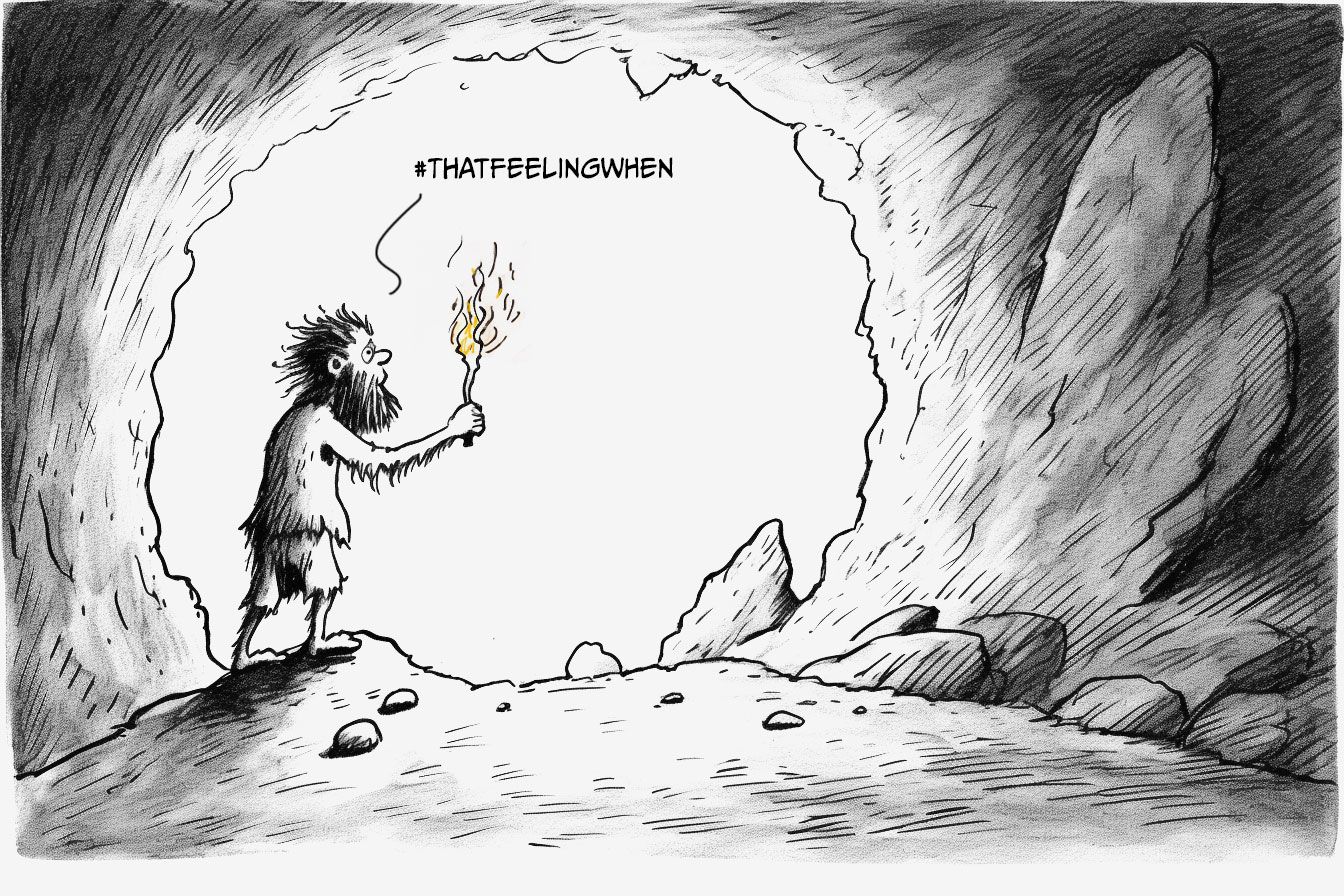
The fire was so much more. It was like that first download of an app that makes your life so much easier. The one that makes you go, "How did I ever survive without this?" Fire was their iPhone, their Netflix, their Uber Eats - all wrapped into one hot, bright, toasty package.
Fast forward a few millennia. Swap the cave for a cozy, climate-controlled apartment. Replace the raw mammoth steak with a smartphone that delivers your favorite cuisine right to your door. And the fire? It's evolved. Instead of rubbing sticks together, we're now harnessing the power of sun, wind, and even the invisible air and radio waves around us to power our tech-savvy lives.
So, how did we go from roasting mammoth steaks to streaming cute cat videos on the same device that can order dinner, calculate the square root of 23769 (it's 154, by the way), and tell you the weather in Timbuktu? Let's dive in and trace our roasty, toasty tale of progress.
The Dawn of Energy: The First Flame
Okay, let's rewind - not just a few years, or a few centuries, but all the way back. Back when Netflix was just two woolly mammoths acting out a drama at the cave entrance, and your biggest worry was remembering which rock you left your favorite club under. Yep, we're talking about the Paleolithic era, the Stone Age, the dawn of humanity.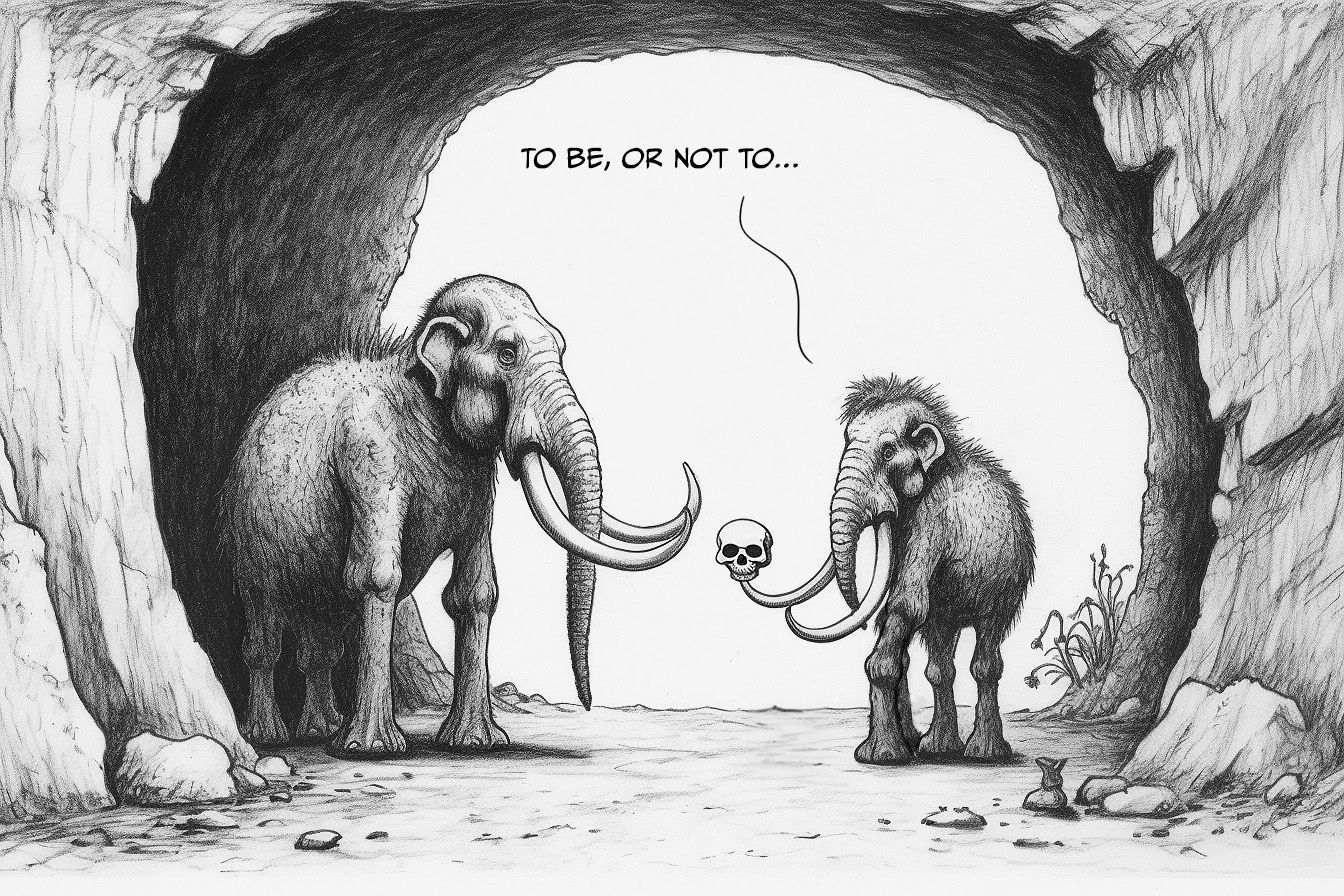
Our ancestors weren't exactly living the dream. Most of their time was spent trying to find food, avoid becoming food, and keep warm. It was a bit of a survival thriller, to be honest. It was during these desperate times that our great-to-the-nth-degree grandparents stumbled upon something that would forever change the course of history: fire.
Imagine the scene: It's a regular evening in the life of Mr. Caveman. After a hard day's hunting and gathering, he's back home. While fiddling around with some sticks, trying to carve a particularly tough mammoth jerky, there's a spark. And another. Then suddenly, there's a small flame. His surprise quickly turns into fascination and excitement as the warmth radiates from this new, strange thing.
This was a big deal. And by big deal, I mean a groundbreaking, life-altering, epoch-defining, monumental deal. The discovery of fire wasn't just about staying warm or scaring off predators - although both of those were pretty awesome side benefits. It was the beginning of our relationship with energy, marking the first time humans harnessed a natural phenomenon and used it to their advantage.
With fire, they could now cook food, making it more palatable and safe to eat. They could keep predators at bay and stay warm during chilly nights. Fire also became the center of communal activity - the Stone Age version of a group chat or a town square. Around the fire, they would gather, share stories, celebrate victories, mourn losses, and strengthen social bonds. Fire, in essence, became a tool for survival, a catalyst for community, and a symbol of progress.
In retrospect, it's safe to say the discovery of fire was a real game-changer. It was like the grand unveiling of the first iPhone at the Macworld convention in 2007, but with a lot more fur and grunting. With fire, we took our first steps on the long and winding road of energy evolution. So, it's here that our tale truly begins, from a single spark in the heart of a dark cave to the bright, bustling world of power that we live in today.
The Industrial Revolution: The Age of Steam and Coal
Alright, we're doing a time warp again. Whoosh! We've landed smack-dab in the middle of the 18th century. Things are looking a bit different now. Stone axes? So passé. Chasing mammoths? Hardly. Now we've got top hats, smoky factories, and an intense fascination with steam. Welcome to the Industrial Revolution.
Now, the Industrial Revolution was kind of like the fire discovery of its time, but instead of sparks flying from sticks, we've got steam shooting out of boilers. This was the era when humans looked at a lump of black rock (aka coal), then at a kettle boiling water (creating steam), and then back at the lump of coal, and thought, "Hey, we might be onto something here."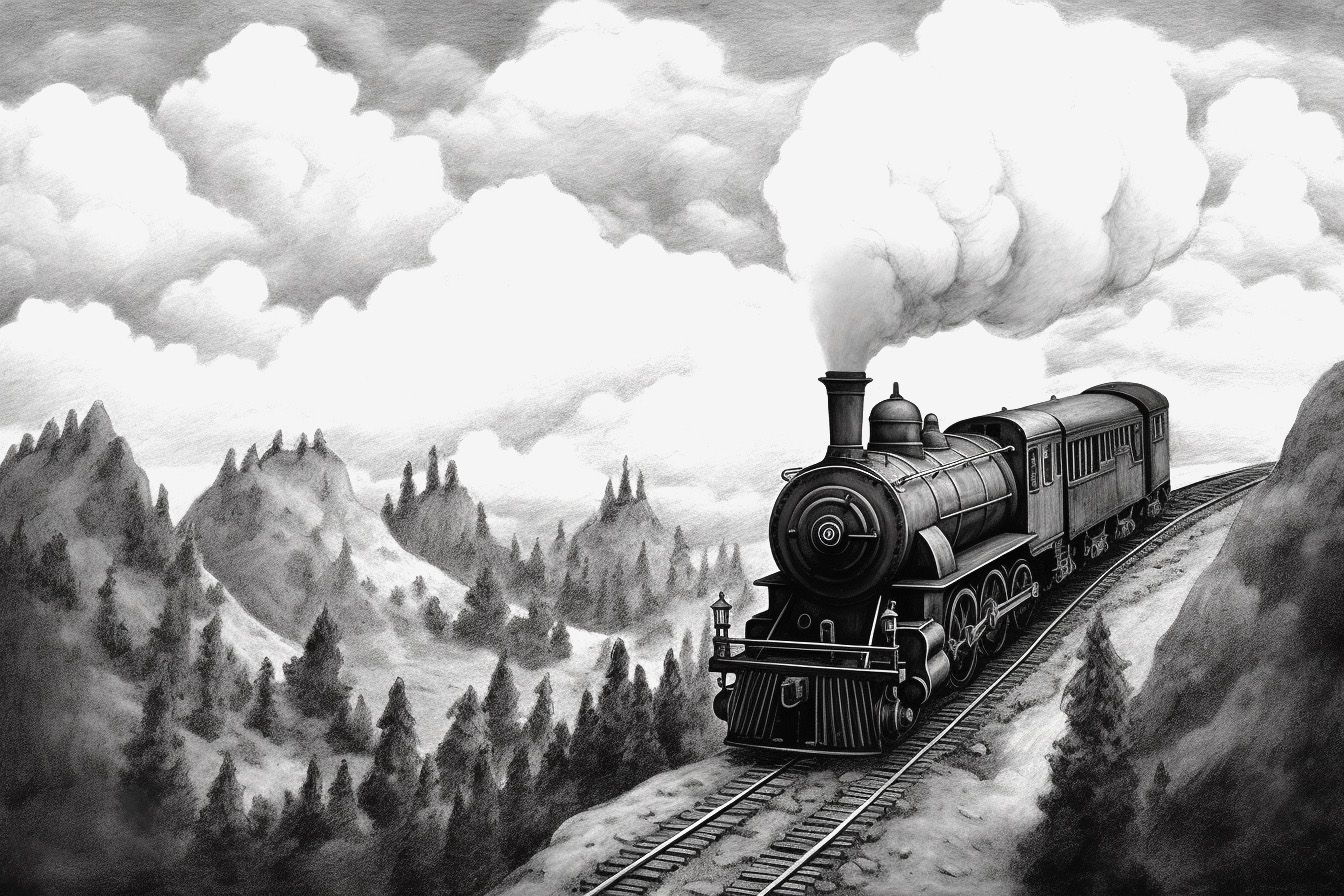
Enter the steam engine. This hunk of metal and ingenuity was the superstar of the time. I mean, seriously, this thing was like the Beyoncé of the Industrial Revolution. James Watt (the Ed Sheeran of inventors) took a good look at Thomas Newcomen's early steam engine and said, "I can make this better." And boy, did he deliver.
With Watt's improved steam engine, coal wasn't just heating homes anymore; it was powering factories, driving locomotives, and propelling steamships. The world suddenly got a whole lot smaller as people and goods moved around faster than ever before. Cities grew, populations boomed, and society transformed from a symphony of agriculture to a rock concert of industry.
But it wasn't all top hats and tea parties. The Age of Steam and Coal was also the era of child labor, horrific working conditions, and environmental damage that our planet still bears the scars from. It was like an adolescent growth spurt - impressive and transformative, yes, but also awkward and riddled with acne. Or, in this case, smog.
What we have to remember, though, is that despite its grime and growing pains, the Industrial Revolution was an extraordinary time. It marked a pivotal point in our energy evolution, shifting us from the relatively simple use of wood and water to the complex, powerful exploitation of fossil fuels.
From cavemen kindling their first fire to Victorian-era folks firing up steam engines, our mastery of energy has continuously shaped the course of human history. And as we leap from the Age of Steam and Coal into the era of electricity and nuclear power, our little tale of progress is about to get a whole lot brighter.
The Electrical Era: Powering the 20th Century
Alright, so we've managed to escape the sooty grip of the Industrial Revolution. We've left behind steam engines, child labor, and questionable hygiene standards (seriously, bathing was not a big thing back then). Fast forward to a time when coal and steam are still around, but something new is zapping into the scene. Yep, you guessed it - it's time for the Electrical Era. Buckle up and make sure your hands aren't wet, we're about to get electrified.
The Electrical Era is like the cool older sibling in the family of energy evolution. It's not as old and grumpy as the Age of Steam and Coal, but it's more mature and refined than the crazy experimental phase we're in now (looking at you, fusion energy). This is the era that powered the 20th century and brought us some of the greatest advancements in human history.
The star of this era? The power plant. These megastructures were like the beehives of the electrical era. Inside, you had coal or natural gas being burned to boil water, creating steam (yes, our old friend steam is back) that would turn a turbine and generate electricity. Sounds complicated? That's because it is. But it's also kind of magical. Like, imagine telling a caveman that you're going to create light and heat without fire. Their mind would be blown.
And let's not forget the man of the hour, Mr. Thomas Edison. This guy was like the Steve Jobs of the electrical era. His inventions - the phonograph, the motion picture camera, and, most importantly, the practical electric light bulb - lit up the world and changed the way we live our lives. Can you imagine a world without electricity now? No Netflix, no ice cream (fridges need electricity, folks), no air conditioning. It's a scary thought.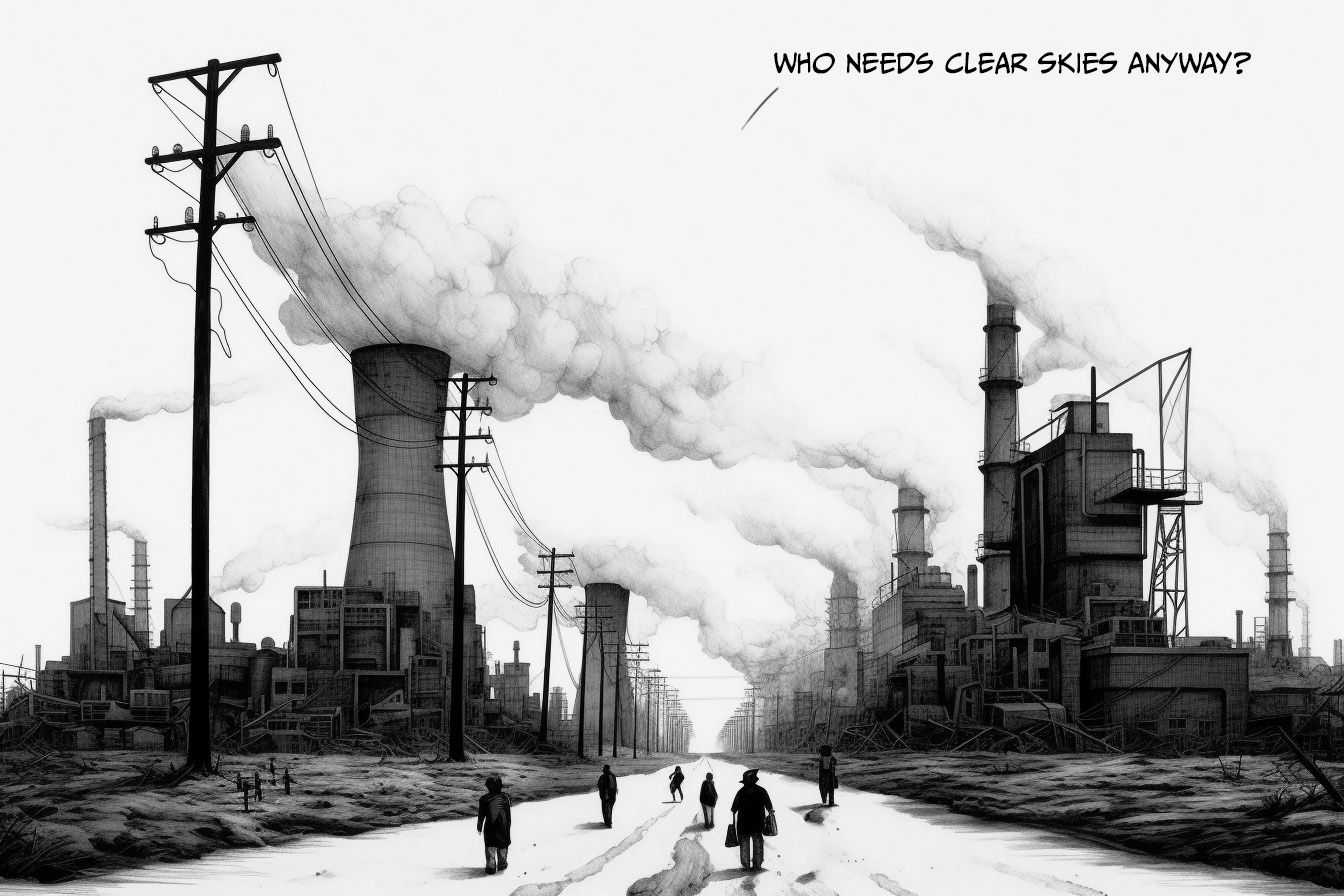
But here's the thing about the Electrical Era. While it brought about immense change and progress, it also came with a cost. Power plants belched out pollution. Electrical lines scarred landscapes. And the demand for electricity meant that we were burning through fossil fuels faster than a wildfire. It's like we were teenagers who had just got their first credit card. We were on a spending spree, and Mother Nature was picking up the tab.
As we wrap up this electrifying chapter of our energy history, we're left with the daunting task of balancing our ever-growing energy demands with the need to preserve our planet. How do we keep the lights on while also keeping our air clean and our ice caps from melting? Stick around, because the next era in our roasty, toasty tale of progress might just have the answer.
The Information Age: The Role of Energy in the Digital Revolution
Cue the synthesizer music and neon lights, we're making a giant leap into the late 20th and early 21st centuries. Yep, we're diving headfirst into the Information Age, a time of rapid technological advances, internet memes, and, let's not forget, a whole new world of energy consumption.
We've come a long way since our caveman ancestors first played with fire, and our Victorian friends got steamy with their engines. Now, we're in an era where power plants and factories still hum in the background, but there's a new kid on the block, commanding our attention and our energy like never before: the digital technology.
In the Information Age, energy isn't just about keeping warm, moving stuff around, or even lighting up our homes. Now, it's about fueling an ever-growing network of computers, servers, smartphones, and other gadgets that make up the complex web of digital technology.
Imagine telling our cave-dwelling ancestors that we're using energy not just for survival, but to send messages across the globe in an instant, or to create virtual realities, or to share cat videos with millions of people. They'd probably grumble, scratch their heads, and go back to their cave paintings. But for us, it's just another Tuesday.
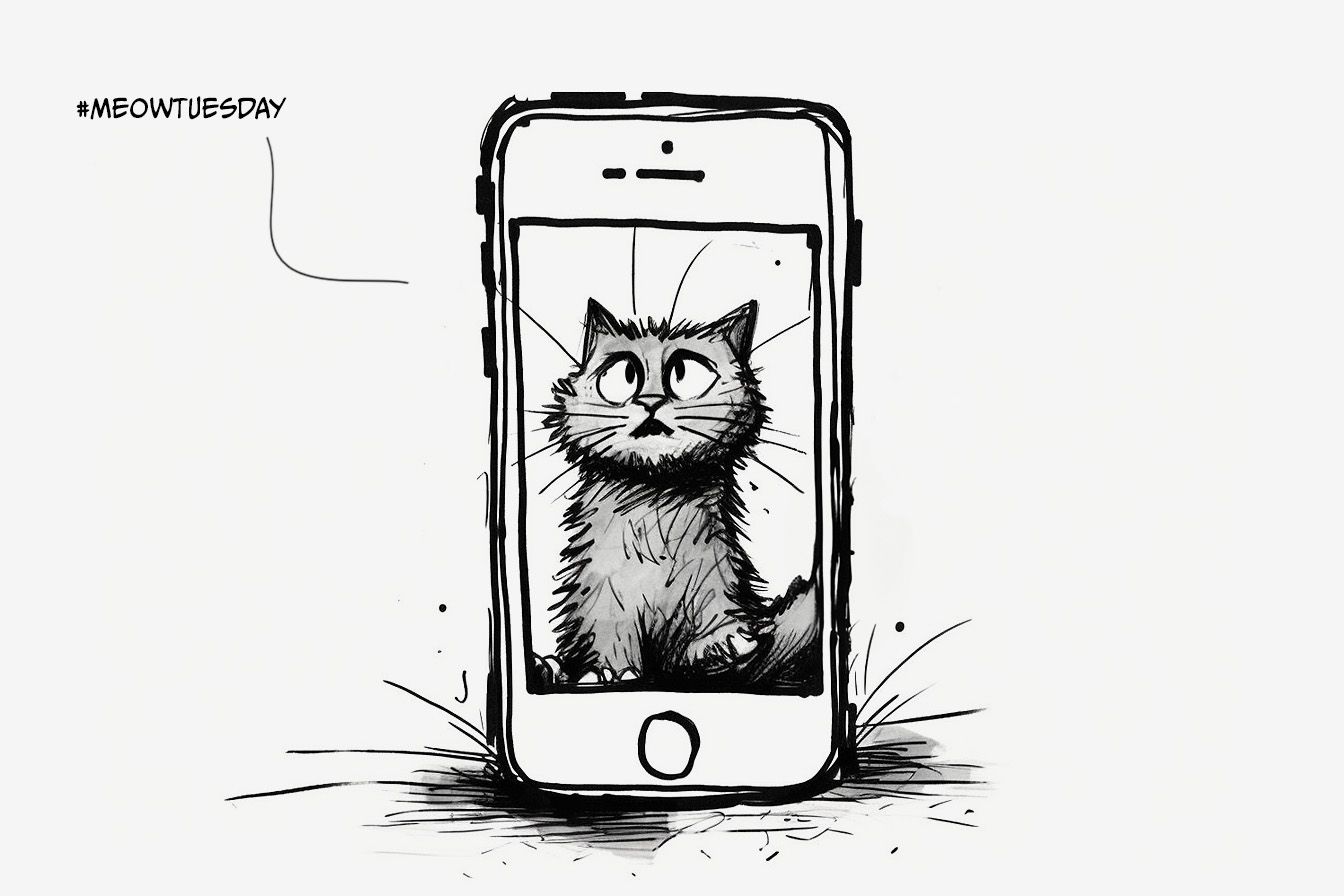
And just like Mr. Edison and his light bulb, we have our own revolutionary figure in this era: Mr. Tim Berners-Lee, the charming British physicist who gave birth to the World Wide Web. This invention didn't just change how we use energy; it fundamentally altered how we communicate, work, and even think. It's the technological equivalent of fire for the Information Age.
However, as in previous eras, progress doesn't come without a cost. While it's easy to forget while we're swiping, clicking, and streaming, the digital world runs on real, physical infrastructure, and that requires energy - a lot of it. Server farms consume massive amounts of electricity, and our beloved devices eat up their fair share too. It's like having a shiny new sports car, but it runs on dinosaur juice (fossil fuels).
As we surf the digital wave, we have to ask ourselves: how can we sustain this Information Age without draining the planet? How can we ensure that our love for technology doesn't lead to an unhappy ending for our roasty, toasty tale of progress? Hold onto your Wi-Fi signals, folks, because as we move into the era of renewable energy and sustainability, things are about to get really, really interesting.
The Green Transition: Renewable Energy in the 21st Century
And now, let's fast-forward through the dial-up tones and Y2K scare into a time when our smartphones are smarter than the computers that put a man on the moon. A time when we're starting to realize that we might have been a bit too reckless with our energy spending spree. Welcome to the 21st century - the era of the Green Transition.
This era is all about renewable energy - the earth-friendly, sustainability superstar of the energy world. We've gone from harnessing the power of fire, steam, and electricity to tapping into the colossal forces of nature itself. Wind turbines are reaching for the skies. Solar panels are basking in the sunlight. Hydroelectric dams are channeling the power of rivers, and geothermal plants are tapping into the heat of the Earth itself.
The buzzword of this era? Sustainability. Unlike fossil fuels, which are kind of like the planet's savings account, renewable energy is like the daily paycheck from Mother Nature. It's energy that doesn't run out and doesn't pump harmful gases into our atmosphere. It's a win-win situation - for us and for our planet.
However, as we're starting to learn, this transition is not as simple as trading in your gas-guzzler for a shiny new electric vehicle. The renewable energy revolution requires rethinking our entire energy infrastructure. We're talking about building smart grids, finding efficient ways to store energy (shout out to Elon Musk and his fancy batteries), and figuring out how to make renewable energy reliable around the clock.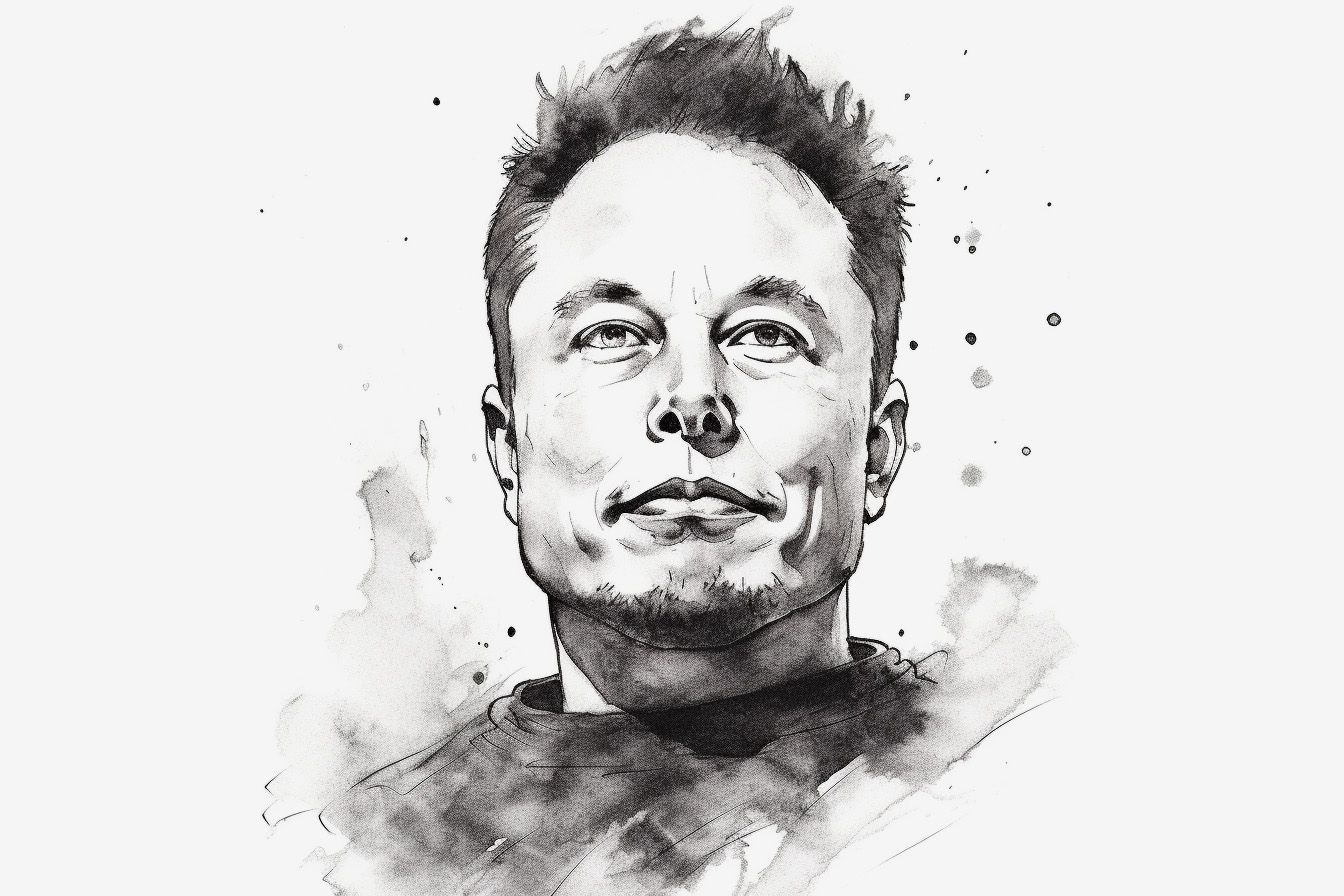
This isn't just an upgrade. It's a complete overhaul. It's like if the cavemen decided to ditch their fire and invent a microwave oven instead. It's a giant leap, but it's a necessary one.
As we stride into this new era, we're not just inventors or innovators. We're custodians, entrusted with the responsibility of balancing our needs with the health of our planet. It's a tough job, but it's also an exciting one.
In this chapter of our roasty, toasty tale of progress, we're not just observing the history of energy unfold, we're actively shaping it. We're stepping away from the harmful habits of the past and moving towards a future where our energy is clean, sustainable, and harmonious with Mother Nature.
So, as we continue our journey through the Green Transition, remember that we're not just reading about history - we're living it. And that, my friends, is electrifying.
The Future of Energy: What's Beyond?
Okay, we've made it through the eons of cavemen and their fires, we've chugged through the Industrial Revolution, zapped through the Electrical Era, surfed the wave of the Information Age, and have started our journey through the Green Transition. But what's next? What's on the horizon of our energy story?
The future of energy is a bit like the final season of your favorite TV show - everyone has their own predictions, and nobody quite knows what's going to happen. But there are some promising contenders in the energy race that could shape the next chapters of our roasty, toasty tale of progress.
First up, there's fusion energy. This is the kind of energy that powers the sun, and it's pretty much the Holy Grail of the energy world. If we can figure out how to harness fusion energy, we could have a nearly limitless, clean energy source. Think about that for a second. A world powered by the same process that lights up the stars. That's like going from a cave painting to a 4K Ultra HD movie. But it's still a work in progress, like trying to bake a cake but we're still figuring out the recipe.
Then there's the prospect of space-based solar power. Imagine giant solar panels floating in space, basking in the sun's rays 24/7, and beaming that energy back to Earth. Sounds like a sci-fi movie, right? But it's an idea that scientists and engineers are seriously considering. The benefits? Unlimited, constant solar energy. The challenges? Well, how do you feel about rocket launches, space debris, and energy transmission over vast distances? It's not exactly a weekend DIY project.
There's also the promise of advanced energy storage. It's one thing to generate energy from renewable sources, but to make it really efficient, we need better ways to store it. So, keep an eye out for innovations in battery technology, and perhaps even more exotic solutions, like storing energy in the form of gravity or compressed air. It's like having a really good leftovers container - it makes your renewable energy feast go a lot further.
The future of energy is, in many ways, unwritten. But it's clear that the solutions will require not just technological innovation, but also changes in policy, economy, and society. It's a challenge that goes beyond inventors and scientists, extending to policymakers, activists, and yes, even you.
As we stand on the brink of this exciting future, we have the chance to be not just spectators, but active participants in shaping the next era of our energy story. So let's roll up our sleeves, fire up our imaginations, and get ready to write the next chapters in our roasty, toasty tale of progress.
A Toasty Future Powered by ONiO.zero
As we reflect on the story of energy, let's focus on a present-day marvel that embodies this narrative: the ONiO.zero. This revolutionary technology isn't just a microcontroller—it's a symbol of a new era in energy utilization. This battery-free device doesn't simply change the rules; it rewrites the entire game, transforming everything from your grandfather's TV remote to your smart sweater. It's the harbinger of a future where technology not only makes our lives easier but also gives our planet a much-needed respite.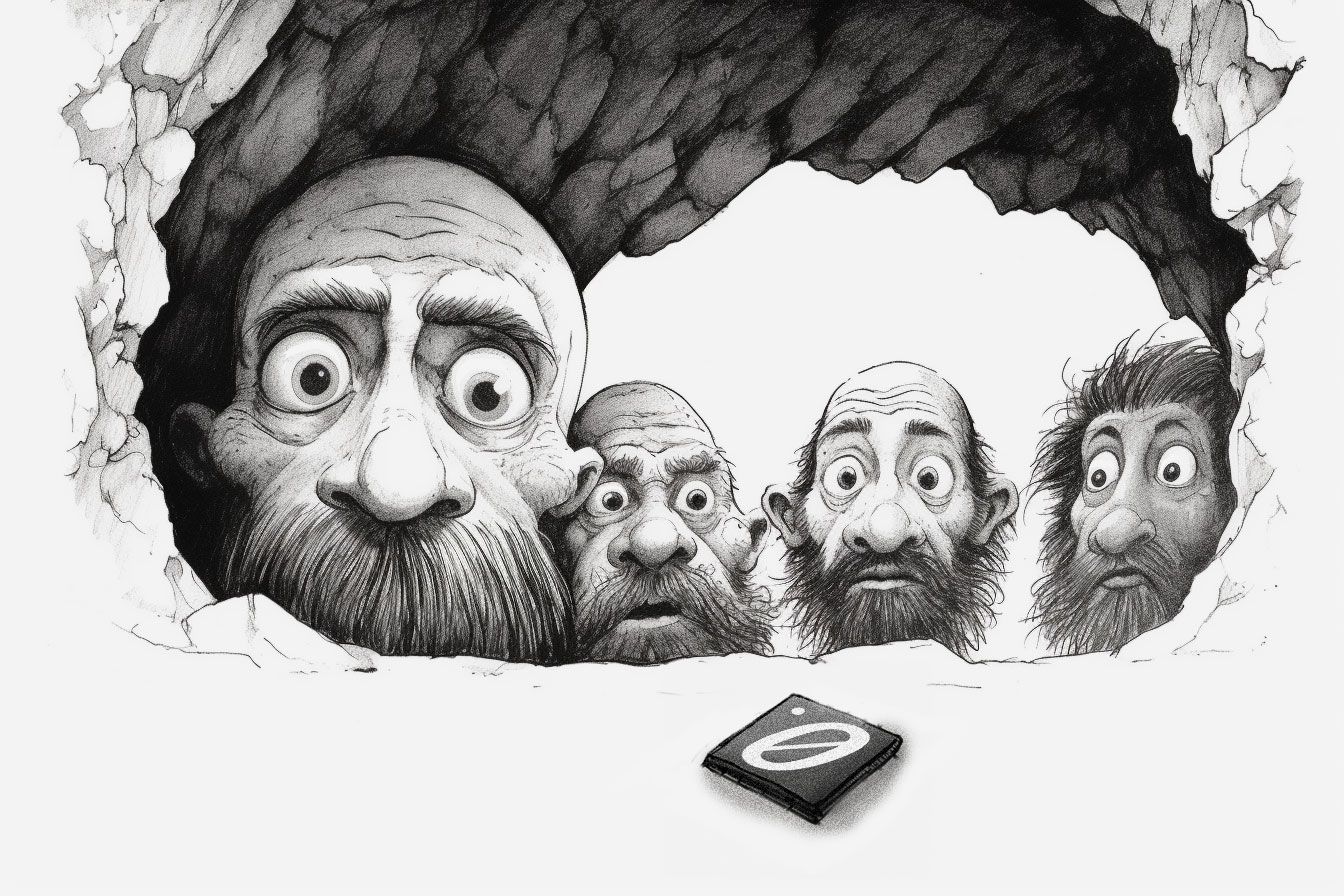 ONiO.zero is not just a product—it's a revolution. It signifies a shift in our understanding of progress, showing that advancement need not strain our planet's resources. The future of energy isn't solely about discovering new ways to generate power but also about learning to use the energy we already have in smarter, more efficient ways.
ONiO.zero is not just a product—it's a revolution. It signifies a shift in our understanding of progress, showing that advancement need not strain our planet's resources. The future of energy isn't solely about discovering new ways to generate power but also about learning to use the energy we already have in smarter, more efficient ways.
As we cast our gaze towards the future, we grapple with a formidable challenge: How do we fuel our growth while caring for our planet? It's a multifaceted problem, but one that we are equipped to solve. We possess the tools, the creativity, the collective will—and now, the ONiO.zero.
This isn't just a narrative that we're observing from the sidelines. We're active participants, writers of this story. Every decision we make, each innovation we bring to life, moulds the future of energy and our world. With ONiO.zero, we're not just stepping into the future—we're shaping it.
So, let's gear up for this battery-free rodeo, for a future that's not just bright but sustainable. A future that's warm and welcoming, not scorching and perilous. Remember, we're all holding the marshmallow. It's our choice whether we let it burn or craft it into something new, something better. Because, like it or not, the revolution is coming - and it's battery-free.













